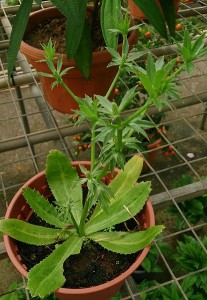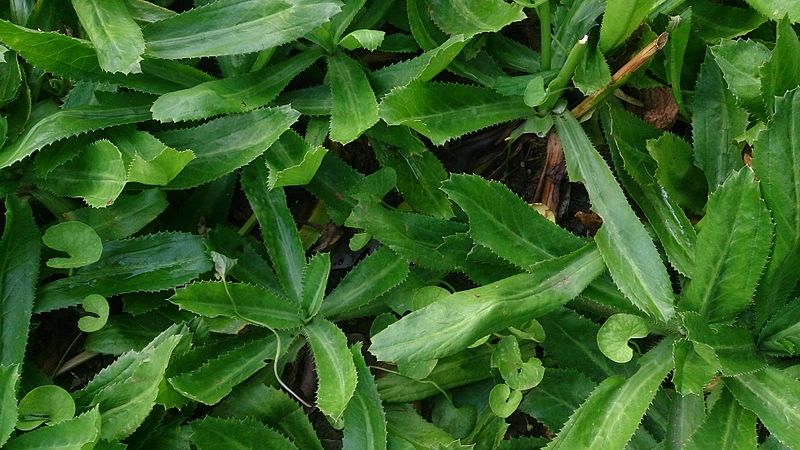
Culantro Flowers
Culantro (Eryngium foetidum), native to Central and South America, is used in cuisines both in its native countries as well as in Asia. It is known by many different names in many different countries around the world. In fact, each country in Central and South America has its own name for this plant. In India, it has a unique name in each region. Most cuisines use just the leaves. Thai cuisine uses both the leaves and the roots.
Medicinally, it has been used for a variety illnesses from epilepsy to burns, fevers, snake bites and constipation.
Culantro tastes like cilantro (Coriandrum sativum) but much stronger. It can be used as a substitute for cilantro. It doesn’t, however, look like cilantro. The leaves are longer and larger and grow in a rosette. Culantro prefers partial shade unlike the sun-loving cilantro. Culantro bolts in hot weather like cilantro, but will bolt later if grown in partial shade.
Culantro is hardy in zones 8 through 11 where it is grown as a biennial. The rest of us grow it as an annual. The plants reach 6 to 10 inches tall, taller in the shade. Unlike most herbs, culantro needs rich soil and high nitrogen fertilizer.
It is easily grown from seed. Surface sow your seeds indoors 60 days before your last frost. The soil should be kept moist and at a temperature of 75 to 80 degrees Farenheit. A heat mat will keep your soil warm. You will need to be patient because it will take 21 to 30 days for the seeds to germinate. The seedlings can be transplanted into your garden 6 to 8 weeks after germination, after all danger of frost and the soil has warmed.
Culantro grows well in containers. You can either grow a single plant in a 1 gallon container or up to 3 plants in a 5 gallon container. Fertilize your containers weekly using fertilizer diluted to half strength.
You can begin harvesting leaves when your plants are 2 to 3 months old. You can harvest individual leaves or the entire plant by cutting it off just above the crown. The crown will re-grow new leaves which should be ready to harvest within a month.
In the ground, feed your plants every 2 weeks with a high-nitrogen fertilizer and remove flower stalks when they begin to appear. When the weather turns hot, the leaves will get tough and it’s a good idea to let the plant flower and set seed. In warmer climates, you can allow the seed to fall directly into your garden to germinate into a second crop. North of zone 8, gather the seed and save it to sow indoors next year.

